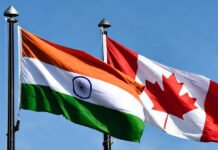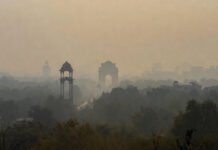India’s state governments and healthcare institutions are on high alert following the global rise in monkeypox cases. This heightened state of readiness comes after the World Health Organization (WHO) declared the monkeypox outbreak a public health emergency of international concern. Although India has yet to report a confirmed case of monkeypox, the proximity of an outbreak in neighboring Pakistan has prompted swift and proactive measures across the country.
AIIMS Delhi Implements Protocol for Suspected Cases
In response to the looming threat, the All India Institute of Medical Sciences (AIIMS) Delhi has established a detailed protocol for managing suspected monkeypox patients. While Safdarjung Hospital has been designated as the primary treatment center in Delhi, AIIMS will also play a crucial role in the initial handling of potential cases.
AIIMS has allocated five isolation beds in its AB-7 ward specifically for monkeypox cases. These beds will be reserved for patients upon the recommendation of the Chief Medical Officer (CMO) of the Emergency Wing. Once admitted, patients will receive immediate care from the Department of Medicine until they are safely transferred to Safdarjung Hospital for specialized treatment.
Safeguarding Against the Spread: India’s Strategic Approach
India’s strategy to combat monkeypox focuses on early detection, isolation, and treatment. The protocols put in place by AIIMS underscore the nation’s commitment to mitigating the potential impact of this viral zoonosis. Monkeypox, although less severe than smallpox, presents similar symptoms and requires prompt medical intervention to prevent its spread.
The WHO’s classification of monkeypox as a public health emergency has intensified the need for robust infection control measures. India’s healthcare infrastructure is mobilizing resources to ensure rapid identification and containment of any suspected cases. By establishing designated treatment centers and clear protocols, the country aims to minimize the risk of widespread transmission.
The Role of Public Awareness in Controlling Monkeypox
Public awareness is a key component in controlling the spread of monkeypox. As the situation develops, the Indian government and healthcare institutions are expected to launch extensive campaigns to educate the public about the virus, its symptoms, and preventive measures. Early identification of symptoms and timely medical consultation can significantly reduce the risk of an outbreak.
The symptoms of monkeypox include fever, intense headache, muscle aches, back pain, low energy, and swollen lymph nodes. The most distinctive sign is a rash that begins on the face and spreads to other parts of the body. The virus spreads through close contact with an infected person or contaminated materials, making personal hygiene and vigilant monitoring of symptoms essential.
Preparedness is Key to Prevention
As monkeypox looms as a potential health crisis, India’s preparedness will be the key to preventing an outbreak. The coordinated efforts of state governments, hospitals, and public health agencies are crucial in this battle. With proactive measures in place, the country is better equipped to handle any emerging threats, ensuring the safety and well-being of its citizens.
By staying informed and vigilant, both the public and healthcare professionals can contribute to controlling the spread of monkeypox, safeguarding India against this global health challenge.
















